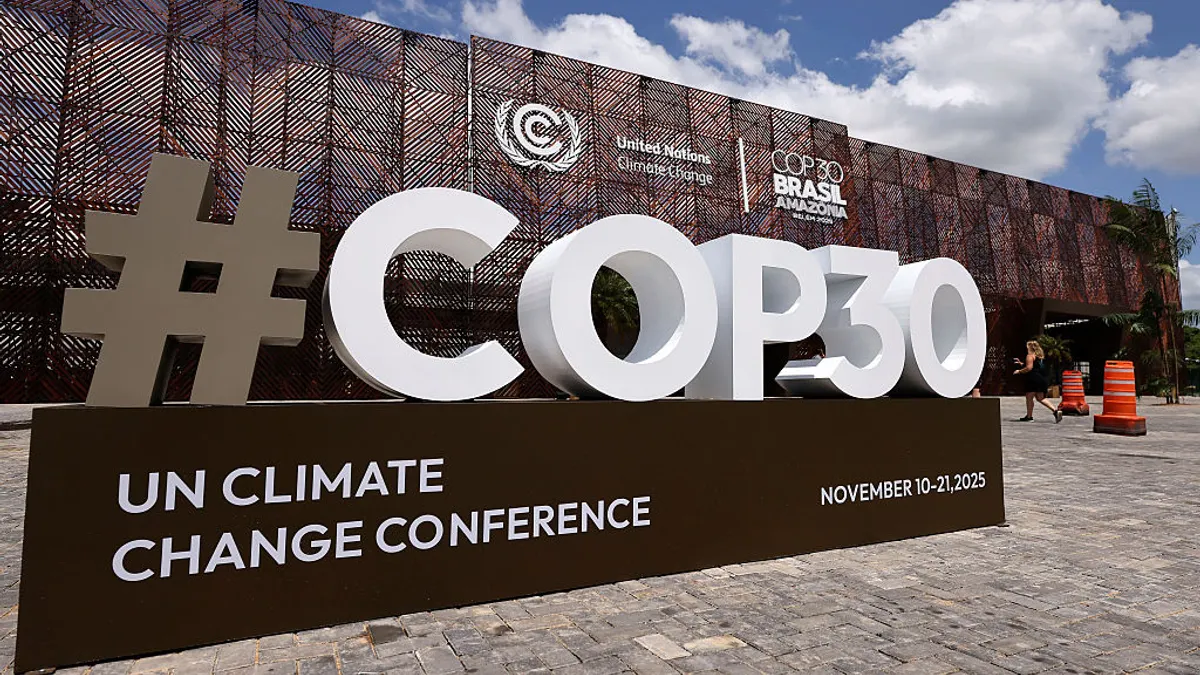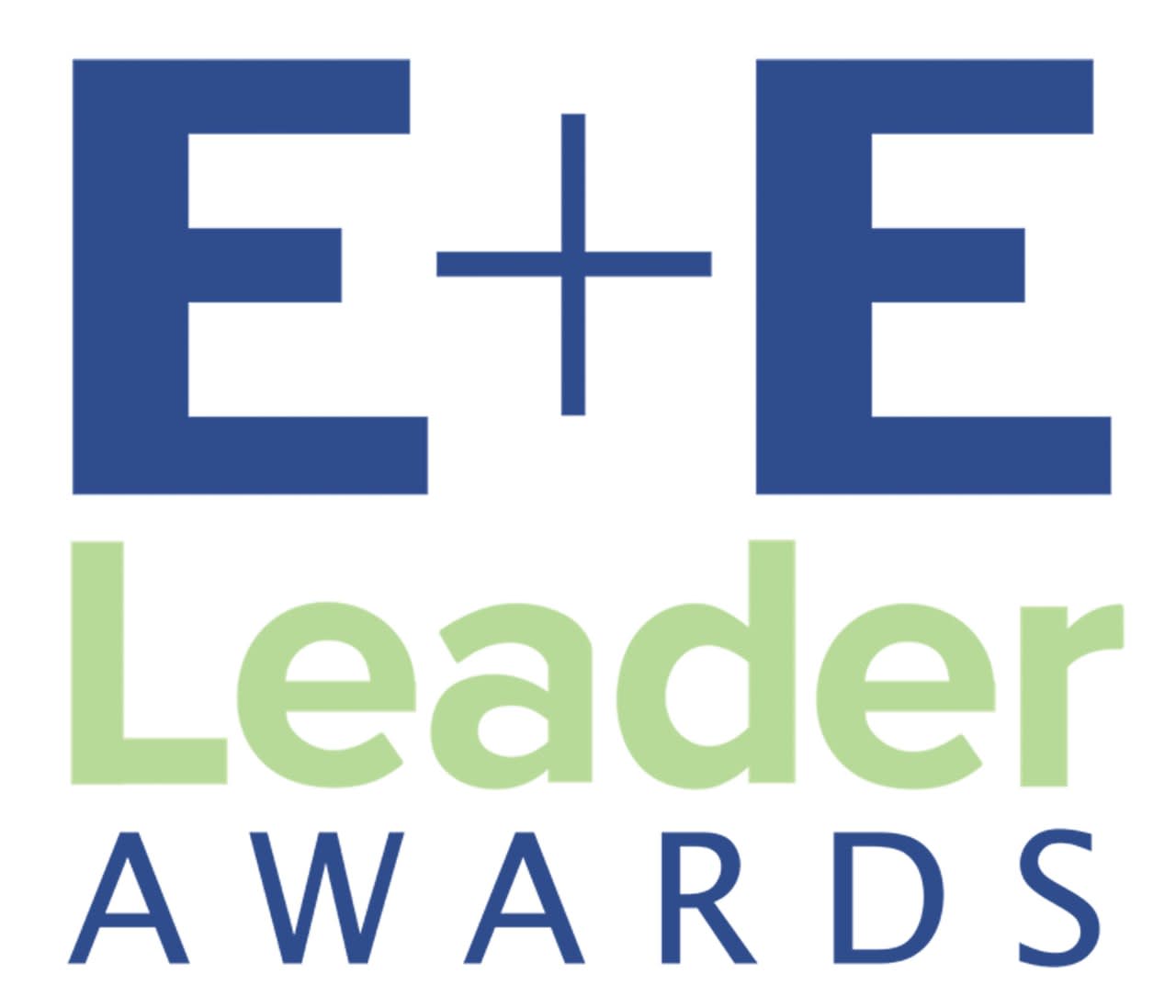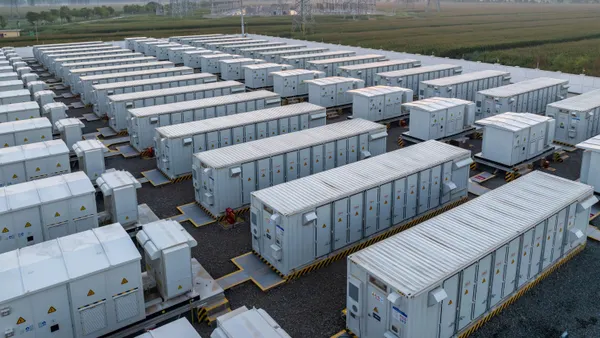Vycarb, a startup focused on carbon removal, storage and measurement, began a novel pilot in New York City last month. Founded and steered by Garrett Boudinot, formerly a science advisor to the New York State climate impacts assessment, the startup is looking to continuously remove carbon dioxide from water.
Part of the Brooklyn Navy Yard Development Corporation’s Yard Labs program and situated on the East River, Vycarb’s carbon dioxide removal, storage and measurement technology focuses on removing carbon dioxide from waterways. This entails speeding up a natural process and giving the bodies of water greater capacity to draw down and store carbon dioxide from the atmosphere.
Utilizing the natural carbon cycle properties of water as a carbon removal and storage medium is gaining popularity, as other startups have technologies that will use rivers and the ocean as a carbon storage mechanism. However, Boudinot, who also serves as Vycarb’s CEO, said the new East River pilot is unique as it will use water for the removal, measurement and storage of carbon dioxide in one continuous process.
“A lot of people are trying to use the ocean to remove carbon. A lot of people are trying to remove carbon. Very few people actually know how effective any of this is,” Boudinot said. “This pilot really represents a first-of-its-kind technology to fully measure this carbon removal reaction so that our customers, communities and the world can have confidence that we're actually having a positive impact on the climate.”
The East River pilot represents the latest iteration of Vycarb’s technology, and the startup has authorization to operate for 12 months and approval to remove up and store up to 100 tonnes per year of carbon dioxide when fully operational. The startup already counts software company Stripe as a customer, and is selling credits for carbon dioxide removed from the river actively.
Editor’s note: This interview has been edited for length and clarity.
ESG DIVE: Tell me a little bit about your background and your journey starting Vycarb.
GARRETT BOUDINOT: I was trained as a proper climate scientist. So it's been most of my career measuring changes to the carbon cycle from climate change, particularly how that was affecting marine ecosystems.
I was at Cornell prior to Vycarb, actually running a research program on carbon dioxide removal, using my skills and tracing carbon cycling to try and trace how effective these different carbon removal practices were. Spoiler alert: They're not always as effective as we think.
So for me, that really highlighted the need to fully measure the carbon removal reaction from CO2 in the air to a non-greenhouse gas carbon molecule that's stored and locked away. That's ultimately what led to Vycarb, where we couple a new measurement technology for carbon cycling in water with a process that leverages that water carbon cycle to convert CO2 into bicarbonate — which is a stable, dissolved, inert carbon molecule in water.
How did you go about using your background in climate science to develop that capability for Vycarb?
Measuring [carbon dioxide] in the air is pretty easy. We've got lots of sensors that can do that. But once CO2 goes into water, it changes form. It can stay as CO2, a gas. It can be converted to H2CO2, which is a carbonic acid. It can be converted to HCO3, bicarbonate, or CO3, carbonate. So lots of different molecules that that [carbon dioxide] can be converted into, and all of those are actually really hard to measure.
A lot of different carbon removal processes use that fundamental chemistry of carbon and water to convert that CO2 into other molecules, whether it's for utilization or storage or just removal. And traditionally, the way that folks measured that is by taking a sample and running it through a pretty expensive and labor intensive and time intensive analytical process — You go into a lab, you put this water sample in something that's going to add acid to it and turn all that carbon into [carbon dioxide] and takes like 20 minutes to run a single sample.
That's the kind of work we were doing at Cornell. That's the kind of work that a lot of carbon removal companies — and not just ocean carbon removal, but soil direct air capture, lots of carbon removal companies that are using water in their process — that's what they're having to do.
So, I had an idea for how we could use existing low-cost electrochemical and spectroscopic sensors. Combine those together on discrete water samples to actually back calculate CO2, bicarbonate and carbonate. Use the raw sensor signals that are measuring the water carbon chemistry and physics, and actually use those to calculate CO2, bicarbonate and carbonate.
It was that idea that got me awarded an Activate Fellowship, which is a science entrepreneurial fellowship that's based here in the U.S. In 2022, they started a specific cohort focused on carbon dioxide removal and carbon management, and so I applied with this idea … for a sensing technology that we can couple to carbon removal that's going to reduce the cost of measurement, the time for measurement and the labor for measurement, so that we can actually scale up high quality measurement with carbon removal at its scales over time and space. So that's the kind of the measurement side that went from over the past two years, an idea to now a sensing technology that we have deployed in the real world, that we have independently validated with a number of university partners and that we're using to fully measure that carbon removal reaction ourselves.
How does the carbon removal pilot work?
We started deploying pilots essentially saying, ‘Okay, we want to do real carbon removal. That's the thing that as a climate concerned person I want to see.’ And doing it in a lab doesn't really provide a whole lot of help, particularly when it's a natural water based reaction, because the natural environment adds a lot of complexities that you just can't replicate in the lab. So piloting in the real world was an immediate goal of ours.
We did our first pilot back in March of 2023 out at the East Hampton Shellfish Hatchery. A partnership that we had with that municipal Shellfish Hatchery deployed our tech at like milligrams per year [of carbon dioxide] removal scale, so we were able to show that we can take CO2 and convert it to bicarbonate, that we could do that safely and effectively and fully measure the reaction.
But it was milligrams of CO2 per year … so it didn't really have the impact that we wanted. So we've been iteratively scaling up next, deploying a larger system at Trust for Governors Island. They have a climate solutions pilot hub that we were the first company to pilot at, where we were able to deploy that same technology continuously and autonomously, so it's just constantly doing CO2 removal and storage, and increase the speed of that reaction to have it remove kilograms of CO2 per year, which is several orders of magnitude greater over a few months.
All of these pilots that we had were what we call a batch reactor. So we would take water in, measure the CO2, bicarbonate and carbonate, convert that CO2 to bicarbonate before it escaped to the atmosphere, and then release that water, and then rinse and repeat.
It worked really well. [But] doing a batch reaction is really hard to scale to a billion tonne climate solution, because we would need hundreds of swimming pool size containers, constantly treating water. What we had to do over the past year is fundamentally change one of our processes, from batch reaction to continuous flow reaction, where — instead of taking discrete water in measuring, treating, measuring, releasing — we have water that's constantly flowing through our reactor as it comes in. We measure it, that controls then, in the reactor, the chemical process to convert that CO2 to bicarbonate. And then on the back end, actually measured that the CO2 went down and was converted to bicarbonate.
That's what we have now launched in a continuous operation at the Brooklyn Navy Yard. The big innovation that we're showcasing in this pilot is that we can now do this in a continuous flow pattern that's gotten us to [a] tonnes [of carbon dioxide removal] per year scale.
Prior to the pilots, did you all study factors like historical levels of carbon dioxide that were in the water to help understand any potential downstream effects of changing some of that water chemistry of those biomes?
That's really why we started at the small scale, to say, ‘let's make sure we can do this safely before we scale up.’ Vycarb’s scaling approach is very much slow, deliberate — slow comparatively [to other ocean removal companies], I think it's still pretty fast — but really being deliberate in each step. When we do 10 tonnes [of removal], let's make sure that that's safe. When we do 100 tonnes, let's make sure that that's safe, 1000 tonnes and so on.
All to say, one of the independent third-party assessments that we've had on this system is that we take samples from the process and send it to independent labs for them to measure as well. We recognize our sensor technology is new. It's still in development. Let's [verify] with an independent third party analysis. That's work that's being done by the University of Rhode Island's ocean carbon lab.
We are also using this pilot as a test bed for another third party, independent group that's spun out of MIT, called atdepth MRV. They're actually deploying their own sensors in the water around what we're doing to, again, make sure that the water that's coming out of the system doesn't have negative impacts, and that the baseline CO2 is such that we're actually having a climate impact. We're actually removing CO2 from the climate system.
We specifically target these high CO2 waters as part of our process, and we call this CO2-neutralization, which is different from a lot of other ocean carbon removal processes.That is largely because high [concentration] CO2 waters are not only a source of [carbon dioxide] to the atmosphere, but they're by definition, acidic, as often due to pollution or land use change.
Why water?
Understanding global climate change and carbon cycling, the conversion of CO2 to bicarbonate in the ocean is the main carbon storage sink of just the natural earth system. Estimates are that about a billion tonnes of CO2 per year are removed from the atmosphere and converted to bicarbonate in the ocean.
So there are a lot of folks [that] have said, ‘Well, if we could just accelerate that, if we could speed up that natural process.’ It's highly scalable because the oceans are huge, relatively affordable because the chemistry is pretty simple. It doesn't need too many inputs. So it was recognizing the scalable, low-cost potential to store carbon with the climate adaptation opportunity that the stars seemed aligned to pursue this pathway.
What is Vycarb’s commercialization plan?
One of the benefits of our approach is that we are, by definition, kind of a modular, distributable system. You can drop these anywhere that there's water flow and high CO2 waters. And so while we are deploying this, our business team is identifying other locations that we can deploy at.
Not sure what it will look like or where specifically it will be after 12 months from when we deployed it, but likely that we'll have a New York system nonetheless. The tonnes of CO2 that this system is actively removing and storing are being sold as offsets to our existing customers. So in one sense, this is our step into commercialization, and over the next five years further commercialization looks like, iteratively scaling these up. So we're already thinking, ‘what's the 1000 tonne per year system look like?’



















